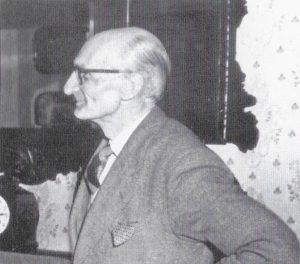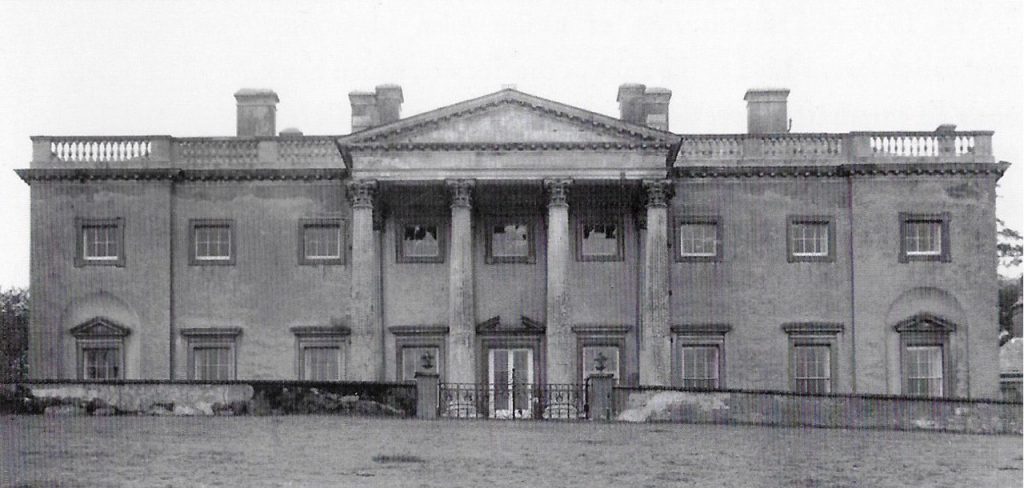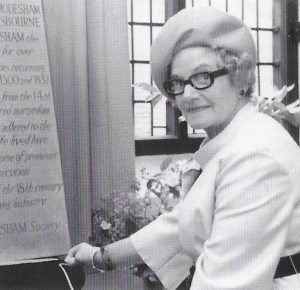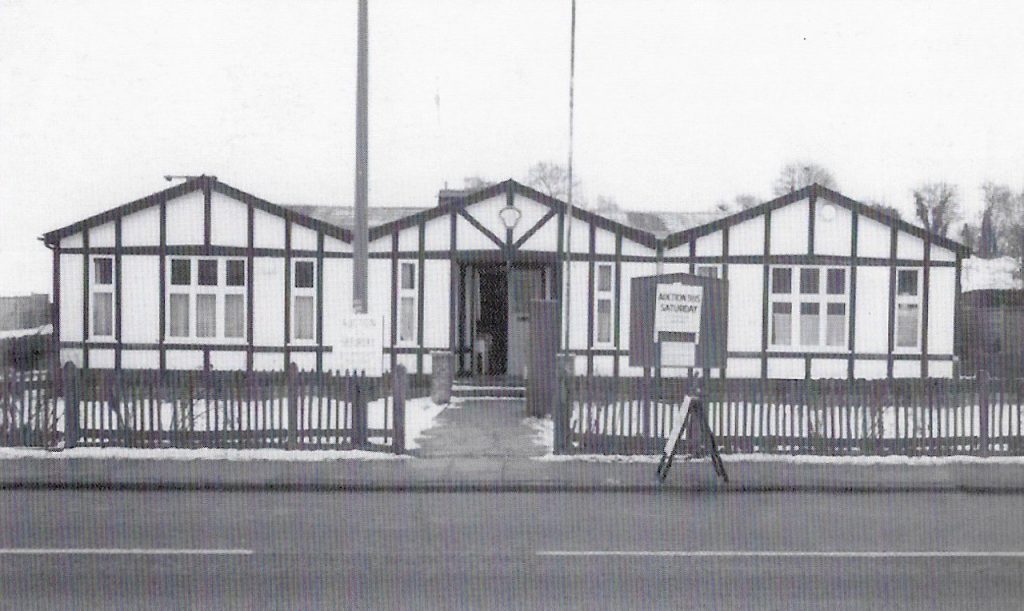Section I of the booklet “50 years of the Amersham Society” covers the following chapters: Foreword by Cheryl Gillan MP · Introduction · Setting up the Society · Early events and activities · Formalising the Society · Early plans for a museum · A Museum is established.
Foreword by Cheryl Gillan MP
As a resident of Amersham Old Town, I am delighted to write this foreword to the Amersham Society History.
Everyone who lives in or around the Old Town area will be well aware of the work done by the Society in preserving the town and its character. Amersham would be a very different place if the Society had never existed.
As a community, we learn from history and that is why books like this are so important. Without knowing what has happened in the past, we cannot plan or prepare for the future.
The Amersham Society has made a tremendous contribution to the quality of life in the Old Town. That quality of life is something residents and visitors alike can treasure.
Cheryl Gillan
Member of Parliament for Chesham and Amersham
Introduction

The Amersham Society had its origin from an idea by John Camp, an author of books on Buckinghamshire, who was working at the Goya Factory and living in Whielden Street in 1956, and had found it difficult to discover the history of the house in which he lived. On hearing of a threat to demolish Shardeloes, he called a public meeting in May of that year, where he met other like-minded local inhabitants with an interest in local history. Together they decided to found a Society to preserve the amenities and traditions of Amersham and to promote by any suitable means the study of the general and natural history of the district.
A committee was formed with John Camp as chairman. Other founder members included Ernest Bridgstock Choat (a retired civil servant, archeologist, geologist and botanist with a great knowledge of, and interest in, local history), L. Elgar Pike (later the author of the Book of Amersham 1976) and Jean Archer (also a keen local historian), who became the first secretary of the new Society.
Setting up the Society
At the first minuted committee meeting on 16th October 1956, the first item on the agenda was the possible demolition of Shardeloes, and the committee resolved to do everything in their power to prevent this. The preservation of the antiquities and traditions of the town was added to the aims of the Society, and the objectives and a formal constitution were drawn up to be notified to all members. Repainting of ancient signs and the danger of cessation of bell-ringing through lack of new ringers also came up for consideration. The local Education authorities were to be alerted to the Society’s existence.

By the time of the first annual general meeting on 13th November, which was well attended, the aims and objects of the Society were better defined. Gifts and loans of documents, photographs and artefacts were promised and an ambition to establish a museum in the town proposed. It was resolved to hold an annual exhibition of material related to the town to be supervised by Mr Bridgstock Choat, who had an extensive personal collection of suitable items to use. He therefore became the first Hon. Curator, a position he was to hold until his death in 1973.
Early events and activities
The first annual exhibition took place in the Market Hall from 3rd to 5th May, 1957, attended by over 2,450 people and deemed to be a great success. It was the first of seventeen annual exhibitions on different topics held at a variety of venues around the town. Society trips were suggested that year though the first did not take place until 1964. Another early suggestion was the use of a tape recorder to collect oral history from elderly residents, though this only came to fruition in 1978. Regular lectures on local topics began in 1957 and these have been arranged ever since and continue to be enjoyed.
In 1958 the monitoring of future local planning applications was added to the aims of the Society, which has been an important aspect of the Committee’s work since then. The first walking tour of the town was conducted by Mr. Bridgstock Choat, and much enjoyed.
A Historical and Geographical Exhibition in Amersham-on-the-Hill in 1959 attracted over 1400 visitors. Many school parties attended and the Society has encouraged school visits ever since; indeed members will notice that the Museum has adopted the regional ‘Family Friendly’ policy and logo, and has set up the Jean Archer Award, both designed to encourage young people’s interest in the history of the town.
Society interests were expanded to include checking on Listing of Ancient Buildings, Green Belt and footpath preservation and car parking – the beginning of a long saga of concern to members. An early success of the Society was to prevent the installation of inappropriate tall concrete lamp-posts with yellow sodium lights throughout Old Amersham.
John Camp resigned as Chairman in 1960 following an unfortunate misunderstanding over an application for a car park on Rectory Mead. His place was taken by Ernest Bridgstock Choat, who was to hold that office until he was succeeded by Eric Corns in 1972.
Formalising the Society
By 1961 the aims and objectives of the Society were fully defined and a new Constitution and Set of Rules approved at the Annual General Meeting. These remained unchanged up to 1977, at which time the Society was registered as a charity and was affiliated to the Civic Trust; later, it became one of the first members of the Association of North Thames Amenity Societies, known familiarly as ANTAS, when it was founded in 1994.
The first Society Outing took place in May 1964 to St. George’s Chapel in Windsor. The cost was 10/6d. per head, though there was a small loss! Annual outings have taken place ever since and are popular and successful; the most recent in our Anniversary Year was to two of the historic Oxford Colleges and the Bodleian Library.
In 1966 a special Exhibition was staged in the Public Library for the 900th Anniversary of the earliest known mention of Amersham in any document, in a charter signed with a cross by Edward the Confessor dedicating land at ‘Agmodesham and Wedon” to his monastic foundation of the West Minster (i.e. Westminster Abbey). This charter had come into the possession of Mr. Bridgstock Choat and featured prominently in the Exhibition. It subsequently became known that there is an earlier reference to the town in a charter of A.D. 796 by Behrhtric, King of the West Saxons, where it is recorded as Ealhmund’s Ham (Elmodesham). A successful Children’s Competition was organised by the Society at the time of the 1966 Exhibition.
Early plans for a museum
1966 was also an important year for the Society as Eric Corns joined the committee. He was to become Chairman of the Society in 1972 and the driving force behind the eventual achievement of Amersham Museum. A move to establish museums in local libraries by the Buckinghamshire County Council in 1967 was opposed by the Society, as it was thought that it would interfere with the long-felt wish for our own town museum; in any case, it came to nothing for lack of funds. The Chairman of the Parish Council expressed the view that Amersham should not have a museum “as museums all over the country are closing down” and the Council refused to make a grant to the Society! How wrong can you be?

After four years of endeavour, in 1972 the Society was able to erect a historical commemorative tablet on the north side of the Market Hall. Mr. Bridgstock Choat had to resign that year because of ill-health but continued to act as Hon. Curator. He was made the first President of the Society as a tribute to all his splendid work for the Society over many years. Eric Corns was a worthy successor as Chairman.
When Ernest Bridgstock Choat died on 24th May 1973 he left much of his very extensive collection of historical documents to the Society, and most of his collection of artefacts to the County Museum. His wife, Vera, had joined the committee of the Society in 1969 and was appointed Hon. Curator and President following his death, positions she held until 1978.
In 1975 Anthony del Tufo was mainly responsible, with help from others, for the preparation of the first Society Town Trail leaflet. This proved very popular and led on to the creation of Guided Walks starting from the Museum, which are still going strong and have proved equally popular.
A Museum is established
In February 1976, Eric Corns asked Peter Leder to catalogue the Society’s artefacts which were then temporarily stored in the basement of the Town Council offices, then in Station Road. Efforts were renewed in 1977 to find a suitable property in the Old Town for the Museum, and minor changes were made to the Rules and Constitution. Membership had declined throughout the 1970s, but when in 1979 the free use of a room at the British Legion Hall was generously offered as a home for the Museum, enthusiasm was soon re-kindled. Thanks to sterling work, especially by Brian Fuller and Peter Leder, who was by then Hon. Curator, the room was converted and displays prepared.

The first Amersham Museum was officially opened by Vera Bridgstock Choat on 23rd August 1980. This semi-permanent Museum was reasonably successful and initially well-attended. It was to last for almost ten years though it rapidly became clear that larger premises were needed, preferably in a more central location in the town. The space available was very limited and the collection expanding rapidly, so that storage became a major problem.
